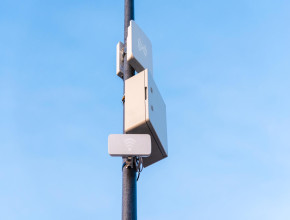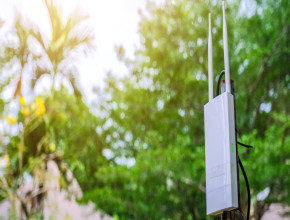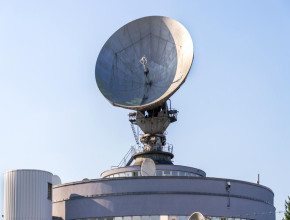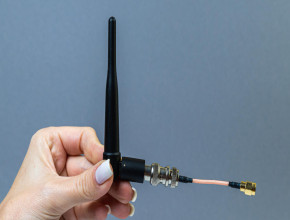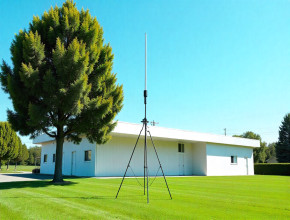
If you've ever been curious about folded dipole antennae and what makes them a great solution for many applications, then this blog post is for you! Here, we'll cover all the details you need to know about folded dipole antennae, from their features and benefits to different types and applications. We'll also discuss the basics of how a folded dipole antenna works, so you can make an informed decision when choosing the right antenna for your needs.
What is a Folded Dipole Antenna?
The folded dipole antenna is a type of antenna that consists of two metal strips that are folded in the middle to form a loop. It is commonly used for receiving and transmitting radio signals in the VHF and UHF frequency ranges, and is most commonly used in television and FM radio broadcast systems. Additionally, it is also used in satellite communications, WiFi, and amateur radio.
The folded dipole antenna is much smaller than a traditional dipole antenna, making it more convenient to install, and is more efficient at radiating radio signals. It has a higher gain than a traditional dipole antenna, meaning it is better at rejecting interference, and is also more directional than other types of antennas, making it better suited for long-distance transmissions.
Overall, the folded dipole antenna is an efficient and effective type of antenna for many applications, from television and radio broadcast systems to satellite communications and amateur radio. Its smaller size and higher gain make it an ideal choice for many applications that require reliable long-distance transmission.
How Does a Folded Dipole Antenna Work?
Folded dipole antenna works by radiating electromagnetic energy in a circular pattern, making it ideal for receiving signals in the VHF and UHF frequency bands. The antenna is composed of two half-wave dipoles that are connected at the center and folded back to form a loop. This design is what gives the antenna its excellent performance characteristics.
The folded dipole antenna is often used in combination with other antennas, such as a reflector, to increase signal strength and gain. When used in combination with other antennas, the folded dipole antenna can provide better coverage and better reception of signals. This makes it a great choice for many applications, including broadcasting, satellite communications, and wireless networking.
What is the Best Frequency Range for a Folded Dipole Antenna?
A folded dipole antenna is an excellent choice for those looking for a low-profile antenna with good performance. It is widely used by Amateur Radio operators due to its relatively low noise figure and wide frequency range of 2 to 30MHz. The folded dipole design allows it to be used in areas with limited space, such as apartments and other small living spaces, as its overall length is only half of a traditional dipole antenna.
Despite its smaller size, the folded dipole antenna still has similar directivity and gain performance to an antenna with twice the length. This makes it a great option for those who need to receive weak signals without any noise interference. Its low-profile design also adds to its attractiveness, as it can be mounted in tight spaces without being intrusive or unsightly.
Overall, the folded dipole antenna is a great choice for Amateur Radio operators and other radio enthusiasts who need to receive weak signals in limited space areas. Its directivity and gain performance are comparable to that of a dipole antenna with twice the length, while its low-profile design makes it suitable for mounting in tight spaces. With its wide frequency range and low noise figure, the folded dipole antenna is a popular choice for those looking for a reliable antenna solution.
Advantages of Folded Dipole Antennas
Folded dipole antennas offer a variety of benefits for those looking for a reliable, low-cost antenna solution.
- Their lightweight, unobtrusive design makes them easy to mount in tight spaces, while their low cost makes them an ideal choice for anyone on a budget.
- They are easy to install and can be mounted in a variety of locations, making them a very versatile choice.
- Their high-gain design ensures better signal reception and transmission, making them an ideal choice for those who require reliable communication.
- folded dipole antennas are also very cost-effective, making them a great choice for those on a budget.
- They are also built to be robust and reliable, making them an ideal choice for outdoor use.
When it comes to performance, folded dipole antennas offer a great solution. Folded dipole antennas are a great choice for anyone looking for a reliable and efficient antenna. They have a much higher gain than other dipole antenna types, meaning more signal is transmitted from the antenna to the receiver.
Additionally, they have a wide radiation pattern, allowing for broadcasts to be sent in a variety of directions.
Disadvantages of Folded Dipole Antennas
- It will not be able to pick up signals from all directions, it is still a powerful antenna type due to its increased sensitivity and capability of picking up weaker signals.
- However, the folded dipole antenna is more difficult to design and construct than other antenna types, and is not suitable for applications where portability is important due to its size.
- The folded dipole antenna is also more sensitive to noise and interference than other types of antennas, which can be a major drawback for those who require a higher level of signal clarity. However, this sensitivity also means the antenna is able to pick up weaker signals, making it a popular choice for broadcast applications.
For those looking for an antenna with directional capabilities and the ability to pick up weaker signals, the folded dipole antenna is an excellent choice. However, due to its size and complexity, it is not suitable for all applications and is best suited to experienced users who can install and maintain the antenna correctly.

